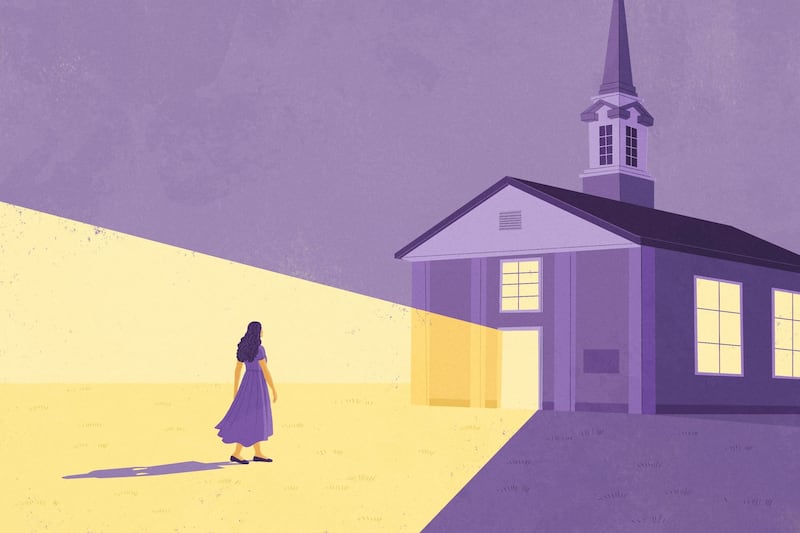Suicide is a tragic problem all across the nation, rallying the efforts and energies of good people from many different quarters. Like many states in the Rocky Mountain region, Utah has endured a relatively high suicide rate.
Because of this higher rate and the well-known fact that Utah has many members of The Church of Jesus Christ of Latter-day Saints, some pundits over the years have advanced the theory that there is a correlation between being a Latter-day Saint and increased mental health problems and suicidality. The available statistics, however, simply do not bear this out.
A clearer understanding starts with taking seriously the uniquely elevated suicide rates of nearby, sometimes very not-Latter-day Saint states. This reality is so well-established that it even has its own name in the social science literature — the “suicide belt.”
As defined by Harvard researchers, the states in this high-risk region include: Oregon, Nevada, Idaho, Montana, Wyoming, Utah, Colorado, Arizona and New Mexico. For whatever reason, this area adjoining the Rocky Mountains has a higher suicide rate compared with the rest of the country.
Some research has suggested that higher rates of gun ownership, rural-ness, and altitude may contribute to the higher rates of suicide in the Intermountain West. Altitude has a theoretically plausible effect on mood disorders as well, and higher altitude areas have been shown to have more suicides even in completely different cultural contexts, like South Korea.
It is beyond this article to dive any deeper into why these intermountain states show higher risk, but the reality of this vulnerability is undeniable. And all other things being equal, these higher numbers are also understandable for Utah because the state happens to be in this intermountain area. Even with this geographic connection, however, it’s inaccurate to think available statistics mean there is a higher suicide rate for Latter-day Saints as well.
One of the best ways to demonstrate this point is to zoom in closer on the data. For instance, there is enough variation in percentage of Latter-day Saints in the suicide belt that we can run some basic numbers to see if, inside the suicide belt, being in a high Latter-day Saint county is connected to having a high suicide rate.
I took numbers from 1) the US Religion Census and 2) the death rate from “intentional self-harm” per 100,000 people from 2018-2022, per the Centers for Disease Control and Prevention, to see how they were related in the nine states in this geographic region. (In some counties, the death rate was not displayed by the CDC because the population was too small, so the estimates were deemed “unreliable” and are not included.)
I then created a simple scatterplot like the kind people make in middle school algebra, which showed an interesting pattern:

When we look more closely at the relationship between suicide and Latter-day Saint proportion in a particular geography, we find that heavily Latter-day Saint counties have lower suicide rates (and yes, it is statistically significant). That means, the more Latter-day Saint numbers increase in a specific county, the more suicide rates decrease.
Can you see now the major problem with assuming that everything Utah-related is an obvious message about Latter-day Saints?
Another way to look at this is what is technically called a bivariate choropleth, or a map that demonstrates visually the relationship between two variables, in this case, the geographic proportion of Latter-day Saints and the death rate from intentional self-harm in those counties where we have reliable numbers (those without sufficient data show up as white in the figure below).
As you can see, there are indeed some dark purple counties, which signifies a high suicide rate on top of a lot of members. That includes Duchesne, Uintah and Sevier counties. There are also a handful of counties with low suicide rates and very few Latter-day Saints (clearly, religion is only one factor involved here). But it’s also worth noting the light blue counties with a lot of members and low suicide rates (including Utah and Wasatch counties), along with 58 total red counties with few members and high suicide rates.

Interestingly enough, when the counties in this intermountain region are rank-ordered by suicidality, Utah is not home to the first, second or third highest-risk county — the state doesn’t even make an appearance until the 31st most suicidal county (Duchesne). Conversely, when you examine states with the lowest suicide rate, the very Latter-day Saint-heavy Utah County — arguably the sociocultural core of the church and home to both BYU and the MTC — has the 10th lowest suicide rate (nearby Wasatch County has the fourth lowest).
Of course, a gold-standard study would look at the faith of suicide victims, rather than the geographical percentage of Latter-day Saints alone. Since the faith of suicide victims is not recorded by the CDC, this is difficult. However, one study that looked at measures of suicidality and depression has shown that being a Latter-day Saint protects against the risk of suicide. Other research has shown that Latter-day Saints tend to score higher on measures of well-being, which is also related to suicide rates.
No matter how you cut the data, re-thinking the automatic “Utah equals Latter-day Saint” assumption leads us to see that, if anything, the church’s influence is associated with fewer suicides, old canards notwithstanding.


